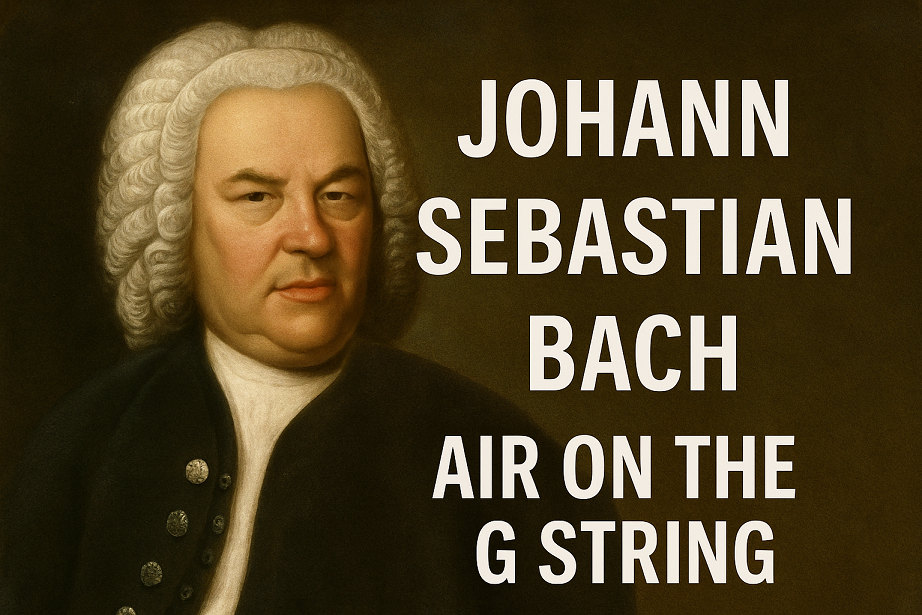Timeless Beauty: Bach’s Famous “Air on the G String”


The Origin of a Masterpiece
Johann Sebastian Bach’s “Air on the G String” is one of the most cherished and instantly recognizable pieces in classical music. Originally, the piece is the second movement—simply titled “Air”—from Bach’s Orchestral Suite No. 3 in D Major, BWV 1068, composed in 1731 when Bach was in his mid-forties. The suite consists of six movements and was written for a typical Baroque orchestra, including oboes, trumpets, timpani, strings, and basso continuo. What sets the Air apart is its instrumentation: during this movement, only the strings and basso continuo play, creating a moment of serene stillness within the otherwise festive suite.
Transformation into “Air on the G String”
The famous arrangement we know today as “Air on the G String” emerged much later, thanks to violinist August Wilhelmj in 1871. Wilhelmj transposed Bach’s original melody down an octave and set it in C major, allowing the entire melody to be played solely on the violin’s G string. This gave the piece its unmistakably warm and intimate quality and contributed to its immense popularity in both concert halls and special occasions worldwide.
Musical Qualities and Lasting Impact
Bach’s “Air” captivates with its gently flowing, lyrical melody, supported by subtle harmonies from the lower strings. Its simplicity is deceptive; the music unfolds with a calm elegance that evokes profound reflection and tranquility. Even stripped of its richer orchestral textures, the arrangement for solo violin and piano retains this serene, introspective character. The beauty of “Air on the G String” lies in its timeless emotional resonance, making it a favorite for weddings, memorials, and moments of quiet contemplation.
“Air on the G String” in Popular Culture
From concert stages to film scores and advertisements, Bach’s “Air on the G String” has reached far beyond the classical world. Its adaptability has led to countless interpretations across genres, ensuring that new generations continue to discover its magic. The piece’s universal appeal lies in its ability to evoke peace and beauty, transcending language and cultural boundaries.
Listen and Experience
To experience the enduring charm of Bach’s “Air on the G String,” watch and listen to the video embedded below. Let yourself be carried away by one of music history’s most touching melodies.
“Johann Sebastian Bach’s ‘Air on the G String’ is one of the most cherished and recognizable pieces of classical music… As it unfolds, the music exudes a sense of calm and introspection, making it a perfect choice for moments of reflection and tranquility.”